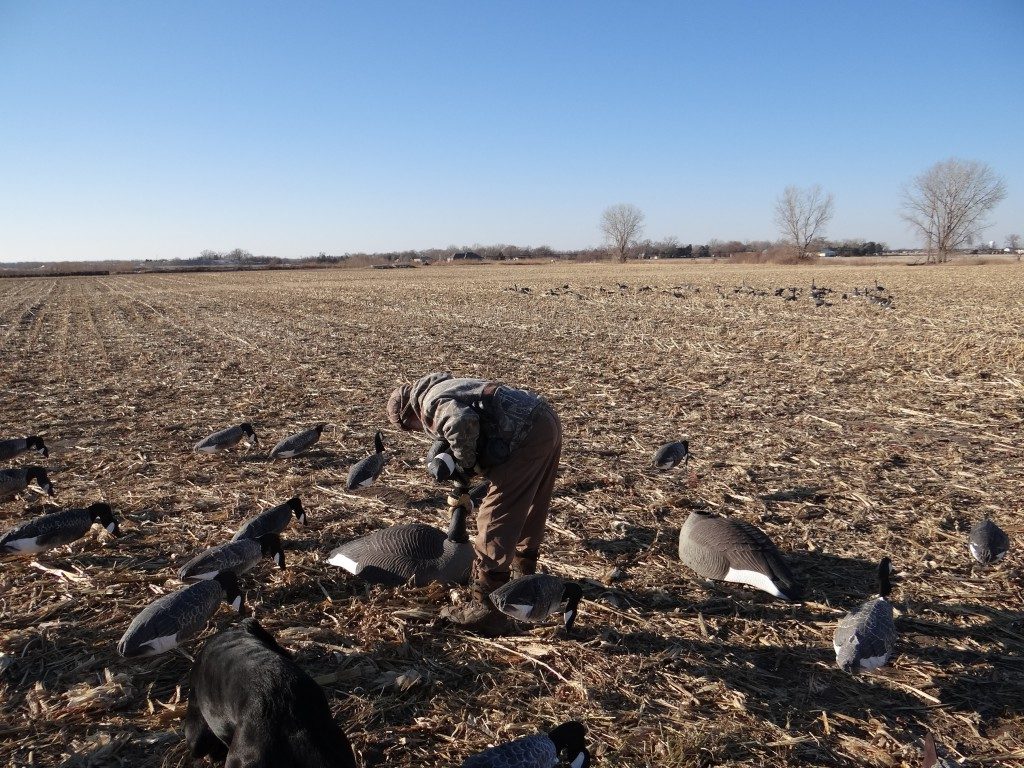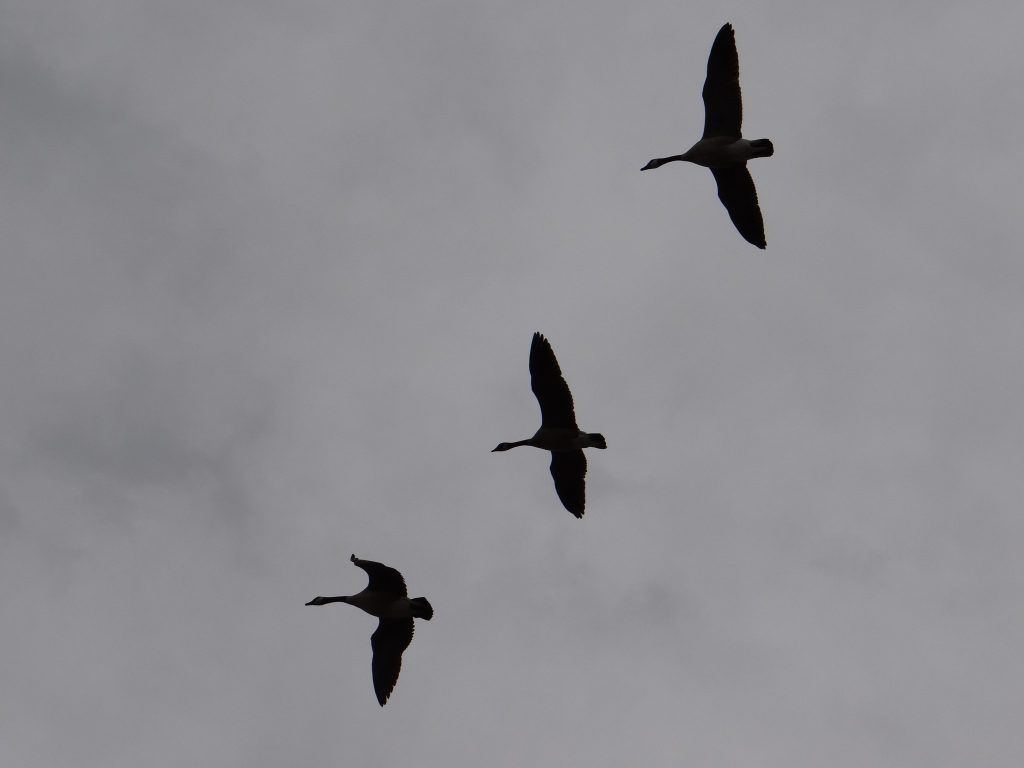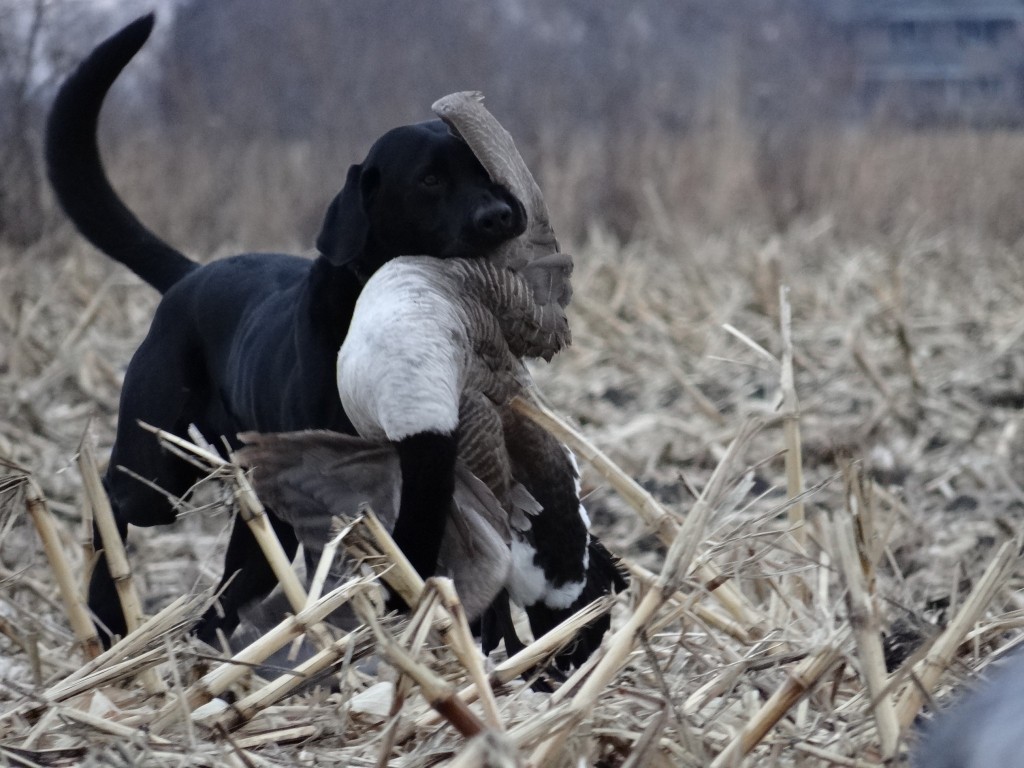Do you really need water, pit blinds, lots of expensive decoys and to be part of a high-priced hunting lease to successfully hunt Canada geese in Nebraska?
No, not necessarily.
Field hunting for Canada geese is a ton of fun and can be very effective! It’s also much cheaper, easier and quicker than trying to establish a goose hunting spread with a boat blind on a pond, lake, reservoir or river.

Beyond the basics, all a hunter essentially needs to field hunt for Canada geese are a layout (coffin) blind, a couple different styles of goose calls and about a half a dozen or so plastic, full-bodied decoys or at least a few dozen windsock decoys. Of course, more decoys in the spread can be even better.

The use of Canada goose “flags” is recommended, too.

Here are nine proven tips for successfully hunting Canada geese in a field.
1. LOCATION, LOCATION, LOCATION. The key to having success field for Canada geese lies in scouting. Hunters need to monitor flocks of Canada geese to determine their movements and daily patterns. Find the ponds, reservoirs, lakes or river backwaters with open water being used as roosts by the Canada geese and watch the direction where the birds are heading to feed when they lift off that water in the afternoon. Mark, note or GPS the spot and get permission from the landowner(s) who own the field(s) where they go to eat. In that field look around for droppings or tracks for further proof that the geese are using them.
2.BEST TIMES TO HUNT. Lunchtime can be a good time to hunt fields for Canada geese. From around 11:30 a.m. to approximately 1:00 p.m., the geese are coming off their morning feeding spots and venturing back to their resting areas. If they see an attractive spread of decoys in a field, they may pit stop if they are still hungry. Some of the most productive Canada goose hunting though happens in late afternoon — from about 3 p.m. until sunset. The window for decoying action may be for only 15 to 30 minutes in duration, but it is intense! During this period, the geese are returning from their resting areas and are heading back out for their final meal of the day in agricultural fields, most notably harvested corn fields.
3. SPREAD OUT DECOYS. Some hunters set out a decoy spread that would make veteran waterfowl hunters blush while others keep it simple with a half-dozen full body Canada goose decoys or 2-4 dozen windsock Canada decoys. However, hunters must realize that the birds will not land or ‘finish’ if there is not enough room to do that. So, be sure to have large openings between groups of decoys for Canada geese to land in a field spread. Some hunters put those decoy groups five or six big steps apart and the results are generally good!

4. DON’T OVERLOOK THE SLEEPERS. A sleeping goose is a content goose and there is nothing that signals all is well more to a passing flock of honkers than to see birds sleeping! Sleeper goose decoys exude an air of contentment and a relaxed feeling that is the ultimate confidence decoy for late-season geese.

5. COMPLETE CONCEALMENT. Concealment, more than any other factor, can make or break a Canada goose hunt in a field scenario. In most cases, when geese don’t cup their wings to decoy, it’s not because of a decoy spread flaw, it’s due to a concealment issue. Hunters ought to spend considerable time “brushing” their layout blinds into the ground landscape for concealment purposes and to make them look as natural as possible in that agricultural field. Hunters themselves have to be completely concealed as well, not overlooking any minor detail that may cause a flock of geese to rise or flair! The sheen of faces is probably responsible for many geese not wanting to decoy so camouflaged face paint should be employed or a camouflaged face mask should to be worn!
6. CALLING ALL GEESE. It doesn’t take a whole bunch of constant, fancy notes and crazy, erratic goose calling sounds to entice Canada geese to come into a field spread. Let the Canada geese in the air dictate how much and when to call. Understand the basics of calling Canada geese, use a variance in tones and don’t call too much. Blow a couple different styles of calls. Maybe one of the goose calls blown will be an acrylic, short-reed version that produces very loud, sharp tones while the other one may be a wood, short-reed call that emits softer, deeper, more realistic sounds of geese.
7. FLAG. Often times, during inclement weather hunters will make a bunch of noise calling when they actually should be flagging to attract singles, pairs, trios and flocks of Canada geese. Flagging is the concept of using a mounted set of fabric wings on a dowel with stiff wire and then moving that apparatus up and down to simulate Canada geese on the ground. Flagging creates movement and gets the attention of geese in the air. Hunters are advised to listen very closely and flag instead of call, particularly on foggy, misty days with little to no wind.
8. STAY STILL, PERFECTLY STILL. Remember, there should be no movement by hunters and dogs until the shot is called by the designated ‘captain’ of the layout blinds. One of the golden rules for waterfowl hunting is that if you can see geese, they, most likely, have already seen you! So, be still and don’t move!

9. SAFETY. When it comes to waterfowl hunting safety using layout blinds, it is mandatory that every hunter respect each others’ safe zones of fire. Also, the muzzles of shotguns must be carefully controlled at all times in layout blinds. Hunters must make certain that their shotgun is always pointed in a safe direction away from themselves as well as other hunters and the dogs!
*NOTE: These tried-and-true tips were compiled from a number of credible sources. Among them: Sillosocks waterfowl hunting product and decoy manufacturer, Jim Druliner of Omaha, NE, longtime waterfowl hunter, Pat Wurth of Valley, NE and avid waterfowl hunter and outdoor educator Jeff Rawlinson of the Nebraska Game and Parks Commission.

Don’t let some of the best waterfowl hunting of the season go past you! Canada goose numbers are high in Nebraska this time of the year and the one constant is that each day is they have to eat! Double check your waterfowl hunting regulations, then get out and make some fun memories by hunting those Canada geese in fields!

The post No Water Needed for Hunting Canada Geese appeared first on NEBRASKALand Magazine.
















